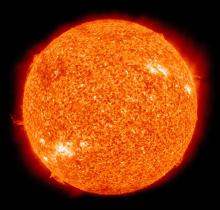Listen to today's episode of StarDate on the web the same day it airs in high-quality streaming audio without any extra ads or announcements. Choose a $8 one-month pass, or listen every day for a year for just $30.
You are here
Nicholas Bobrovnikoff
When Comet Halley blazed across the night sky in 1910, many people tried to hide from it. They feared it might bring poisonous gases or plain old bad luck. But Nicholas Bobrovnikoff couldn’t get enough of it. The teenager watched the comet from his native Russia. And his interest led to a career in astronomy — and a new life in the United States.
Bobrovnikoff was born 125 years ago today. He first studied mining, then joined the Russian infantry, in 1917. When civil war broke out, he became an officer in the Russian White army. He was severely wounded during the war, and suffered from typhus.
When his side lost to the Red army, he escaped to Cyprus and resumed his studies — this time in astronomy. And in 1924, he was offered a position with the University of Chicago astronomy program. Its director, Edwin Frost, had already brought another former Russian officer to Chicago: Otto Struve, who later became the first director of McDonald Observatory.
In the U.S., Bobrovnikoff studied comets. In particular, he gathered every scrap he could find on Halley’s comet — hundreds of photographs and piles of other data. And in 1930, he published a 177-page report — the most extensive report on a single comet anyone had ever done.
Later, Bobrovnikoff spent two decades as director of Perkins Observatory in Ohio. And in 1986, he got to see Halley’s Comet once again — a beautiful iceball that sparked a career in astronomy.






